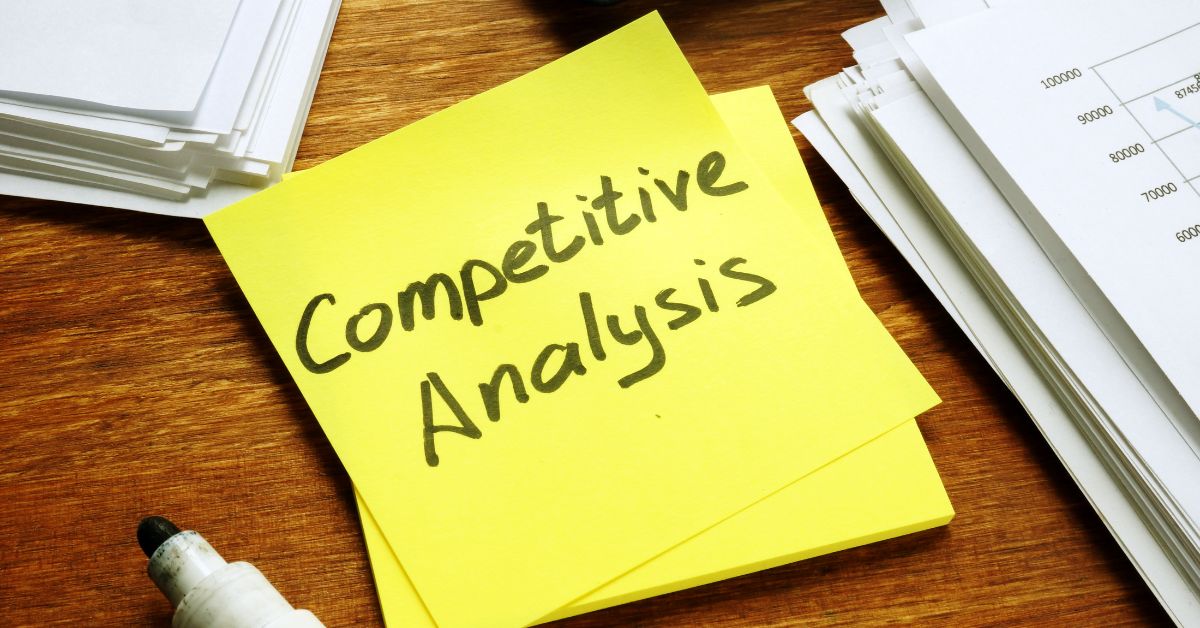4 min read

Being one step ahead of your rivals is crucial in the dynamic world of digital marketing. Gaining a competitive edge in online digital marketing can be achieved by comprehending your rivals’ actions. This can give you insightful information to improve your SEO tactics. Thankfully, data collection and analysis for digital media marketing have been entirely transformed by the advent of artificial intelligence (AI). Using AI-powered marketing tools to stay ahead of the competition and improve your digital marketing services is something we will be discussing in this blog.
Why it is Essential to have Competitor Analysis Tools
However, the good news? You can evaluate how you compare to your top competitors quickly and effectively with the many competitor analysis tools available.
Additionally, you can focus more of your time on marketing and less time trying to outsmart your rivals if you have the right resources.
Instead of wasting too much time attempting to eavesdrop on your rivals, why not let some clever tools handle your research?
Which Instruments are Available for Competitor Analysis?
There are numerous approaches and tools available for conducting competitor analysis. Any device that enables you to keep an eye on your brand and others can be used to spy on rival companies.
The following are a few varieties of tools:
-
Table of Contents
Tools for Keyword Research and SEO
In the world of digital marketing services, it is crucial to comprehend the SEO tactics used by your rivals to raise the search engine ranking of your website. You can understand your competitors’ keyword rankings, backlink profiles, and on-page optimization by utilizing AI-driven SEO and keyword analysis tools such as Ahrefs, SEMrush, and Moz. These tools employ artificial intelligence (AI) algorithms to find high-performing keywords and recommend content and link-building tactics.
-
Listening Tools for Social Media
Social media is a treasure trove of data about your rivals’ target market and demographic. AI-powered social media listening tools, like Mention and Brandwatch, can assist you in tracking mentions, analyzing sentiment, and keeping an eye on the social media activity of your rivals. With natural language processing (NLP), these tools can comprehend the context of conversations and provide you with real-time insights into customer preferences and trends for online digital marketing.
-
Tools for Content Analysis
In digital marketing, producing engaging content is essential. You can learn more about the content strategies of your rivals by using AI-driven content analysis tools like BuzzSumo and Clearscope. These tools evaluate how well your competitors’ content performs and, using AI algorithms, recommend formats, keywords, and subjects that your target audience is likely to find engaging.
-
Tools for Email Marketing Intelligence
Concerning audience engagement in the context of digital media marketing, email marketing is still a potent weapon. Email marketing platforms powered by AI, like Mailchimp and SendinBlue, offer features like personalized recommendations and A/B testing. You can enhance your email marketing efforts by observing the email marketing campaigns of your competitors. This will give you valuable insights into their tactics, content, and customer segmentation.
-
Ad Tracking and Analytics Tools
To spy on your competitors’ paid advertising efforts, consider using AI-powered ad-tracking tools like AdPlexity and SpyFu. These tools allow you to analyze your competitors’ ad copy, creatives, and landing pages for digital marketing services. Additionally, they offer data on ad spend, traffic sources, and keywords, enabling you to fine-tune your advertising campaigns.
-
Heatmaps and Analytics for Websites
Knowing how users engage with your rivals’ websites can be highly beneficial. You can see how users behave on your rivals’ websites by using heatmap and AI-driven website analytics tools like Hotjar and Crazy Egg. You can enhance your website’s user experience and design for digital media marketing by examining user journeys, click patterns, and areas of interest.
-
Market intelligence and predictive analytics
Artificial intelligence (AI) is used by predictive analytics tools such as Kompyte and Crayon to give you market intelligence. These tools can assist you in monitoring the introduction of new products, price adjustments, and other calculated actions made by your rivals in the online digital marketing space. This information will help you make data-driven decisions and modify your strategies as necessary.
-
Strategies for Competitive Pricing and Revenue Optimization
Artificial intelligence (AI)-powered competitive pricing tools like Price2Spy and Prisync can assist businesses in e-commerce and pricing-sensitive industries by providing real-time pricing strategy monitoring. In the context of digital marketing services, these tools offer pricing insights to help you set prices that will maximize revenue and make well-informed decisions.
How Can One Conduct a Competitive Analysis?

Each of these tools can assist you in analyzing your competitors, but it is essential to consider the consequences of running the numbers. Ad adhere to these guidelines to get the most out of your competitive intelligence strategy.
Examine Your Real Competitors.
Trying to punch above your weight will not help you at all. A neighborhood coffee shop with 1,000 followers should not be too hard on themselves for not having as many as their rivals.
As previously said, context is essential. Indeed, observe the actions of the prominent participants in your sector. When evaluating your competitors, however, concentrate on those closest to you in size and intended market.
Prioritize Metrics First.
It is easy to become fixated on messaging when observing rivals.
On the other hand, starting with data-driven analysis is a more prudent approach. Before delving into the “why” behind their marketing, attempt to identify as many metrics as possible.
How frequently do your rivals, for instance, publish new content? How many posts are promotional compared to those that aren’t? Which hashtags and keywords are most effective for them?
The responses to these queries are more significant than deciphering someone’s message.
Put Analysis to Use
Lastly, ensure that the information you find results in some action.
You might find a new set of keywords to target in your content based on your research. Considering your rivals’ engagement, you may need to push your content harder.
Ultimately, the goal of competitive analysis is to enhance your marketing approach. Gaining as much knowledge as possible from rivals is advantageous.
Conclusion
In summary, AI-driven marketing technologies have completely changed how companies monitor their rivals in online digital marketing. With the help of these tools, you can improve your marketing efforts by gathering valuable information, learning more about your rivals’ tactics, and making informed decisions. When using these tools to obtain competitive intelligence for digital media marketing, remember that although they can offer much information, ethical issues and data privacy laws must be considered.
Published: November 7th, 2023








